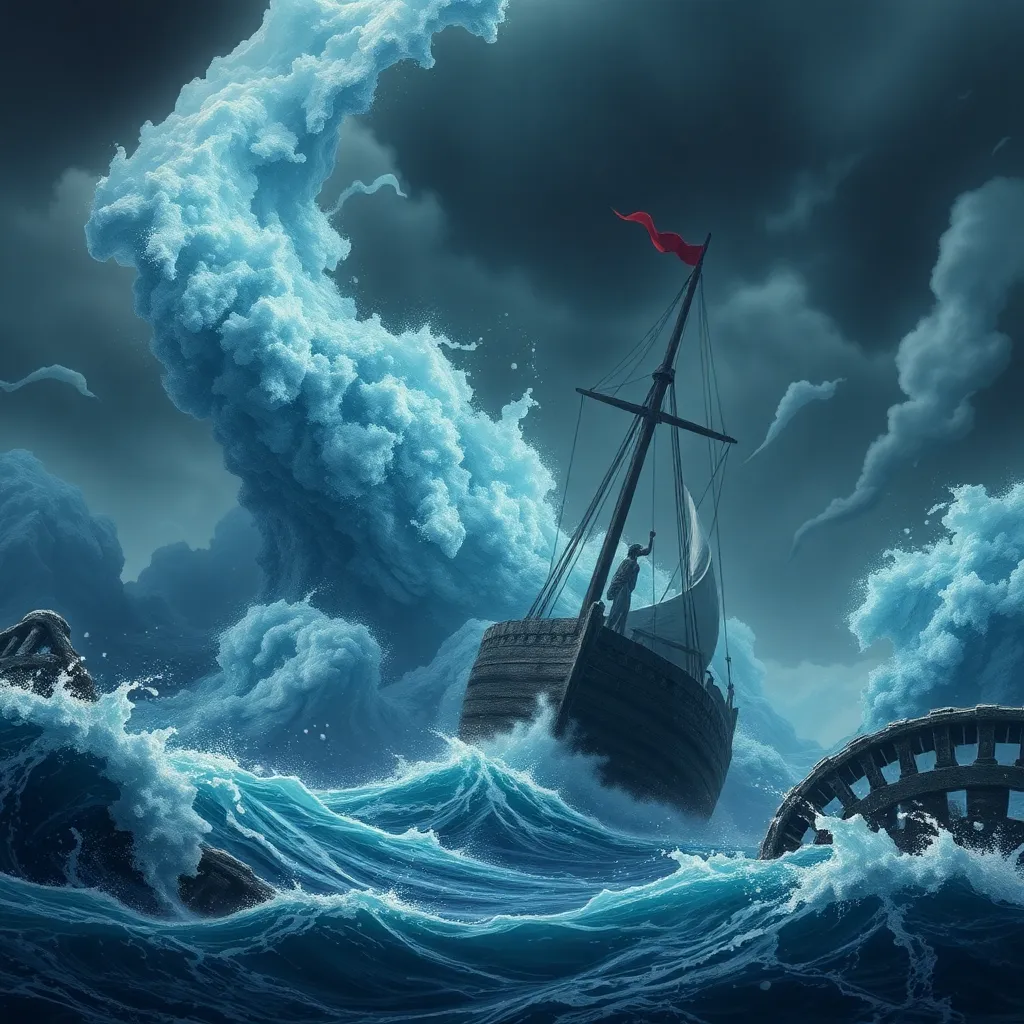The Myths of Poseidon’s Wrath: Storms and Shipwrecks
I. Introduction
In the vast tapestry of Greek mythology, few deities command as much awe and fear as Poseidon, the god of the sea. Revered and feared by sailors and land-dwellers alike, Poseidon’s influence extended beyond the waters, touching upon the very fabric of life in ancient Greece.
The significance of storms and shipwrecks in ancient maritime societies cannot be overstated. For the Greeks, the sea was both a source of sustenance and a perilous frontier. The unpredictability of the ocean, governed by Poseidon’s moods, served as a reminder of the power of the gods over human fate. This article aims to delve into the myths surrounding Poseidon’s wrath, exploring the narratives that have shaped human understanding of the natural world and its capricious nature.
II. The Role of Poseidon in Greek Mythology
Poseidon is often depicted as a robust figure wielding a trident, with flowing hair symbolizing the waves of the sea. As the god of the sea, he was responsible for the oceans, rivers, and all aquatic life, as well as being a god of horses and earthquakes.
- Description: Poseidon is one of the Twelve Olympians and the brother of Zeus and Hades.
- Powers: He had the ability to create storms, earthquakes, and even tsunamis, showcasing his dominion over both the sea and the land.
- Relationships: Poseidon often clashed with other gods, particularly with Athena, over the favor of cities such as Athens.
III. Historical Context of Maritime Traditions
The ancient Greeks relied heavily on the sea for their livelihoods, engaging in trade, fishing, and exploration. As a civilization that flourished along the Mediterranean, the ocean was central to their economy and culture.
- Importance of the Sea: The sea facilitated trade routes and cultural exchanges, making it a crucial element of Greek life.
- Beliefs in Divine Retribution: Sailors often attributed storms and shipwrecks to the displeasure of Poseidon, believing that proper rituals and sacrifices were necessary to appease him.
- Impact on Trade and Travel: The threat of storms could halt trade and disrupt travel, highlighting the sea’s dual nature as both a provider and a destroyer.
IV. Major Myths of Poseidon’s Wrath
Several myths illustrate Poseidon’s vengeful nature, capturing the imagination of ancient Greeks and leaving a lasting legacy in literature and art.
- The Story of Odysseus: In Homer’s “Odyssey,” Poseidon seeks revenge on Odysseus for blinding his son, the Cyclops Polyphemus. This results in a long and treacherous journey filled with storms and trials.
- The Tale of the Minotaur: Poseidon sent a bull to King Minos as a sign of his favor. When Minos failed to sacrifice the beast, Poseidon cursed his wife, leading to the birth of the Minotaur, a creature that brought about destruction.
- Other Notable Myths: Various tales speak of sailors who angered Poseidon, resulting in shipwrecks and disastrous storms that served as cautionary tales.
V. The Symbolism of Storms in Greek Literature
In Greek literature, storms often serve as powerful metaphors for divine anger and human folly. The tumultuous seas reflect the chaos that ensues when mortals offend the gods.
- Metaphors for Divine Anger: Storms represent the wrath of gods, illustrating the unpredictable nature of divine intervention in human affairs.
- Poetic Depictions: Poets like Homer and Hesiod used vivid imagery of storms and shipwrecks to convey the fragility of human existence in the face of divine power.
- Interplay of Actions: The relationship between human actions and divine response is a recurring theme, where a sailor’s hubris often leads to dire consequences.
VI. Real-Life Impacts of Storms and Shipwrecks
Throughout history, storms and shipwrecks have had catastrophic consequences, and many were attributed to Poseidon’s wrath by ancient Greeks.
- Historical Shipwrecks: Numerous shipwrecks are reportedly linked to storms that ancient sailors believed were caused by Poseidon.
- Natural Phenomena: Many natural events, such as earthquakes and tsunamis, were explained through the lens of mythology, with Poseidon often blamed for these disasters.
- Psychological Impact: The fear of storms and the sea deeply affected sailors and coastal communities, instilling a reverence and dread for Poseidon.
VII. Debunking the Myths: Scientific Explanations
As we advance in our understanding of the natural world, many phenomena once attributed to Poseidon can now be explained scientifically.
- Weather Patterns: Meteorology has helped us understand the dynamics of storms and ocean currents, debunking the myths surrounding divine retribution.
- Human Error: Many maritime disasters can be traced back to navigational errors or poor judgment, rather than divine punishment.
- Modern Science: Advances in science provide a clearer picture of our environment, allowing us to appreciate natural forces without attributing them to mythological figures.
VIII. Conclusion
The myths surrounding Poseidon’s wrath serve as a testament to humanity’s attempt to understand and cope with the unpredictable nature of the sea. While ancient narratives depicted Poseidon as a vengeful deity, modern science encourages us to view storms and shipwrecks through a different lens.
The enduring legacy of Poseidon in contemporary culture reminds us of our historical relationship with the ocean, reflecting our fears and respect for nature’s power. As we navigate the complexities of life, the intersection of mythology and human experience remains a poignant reminder of our place in the world.




